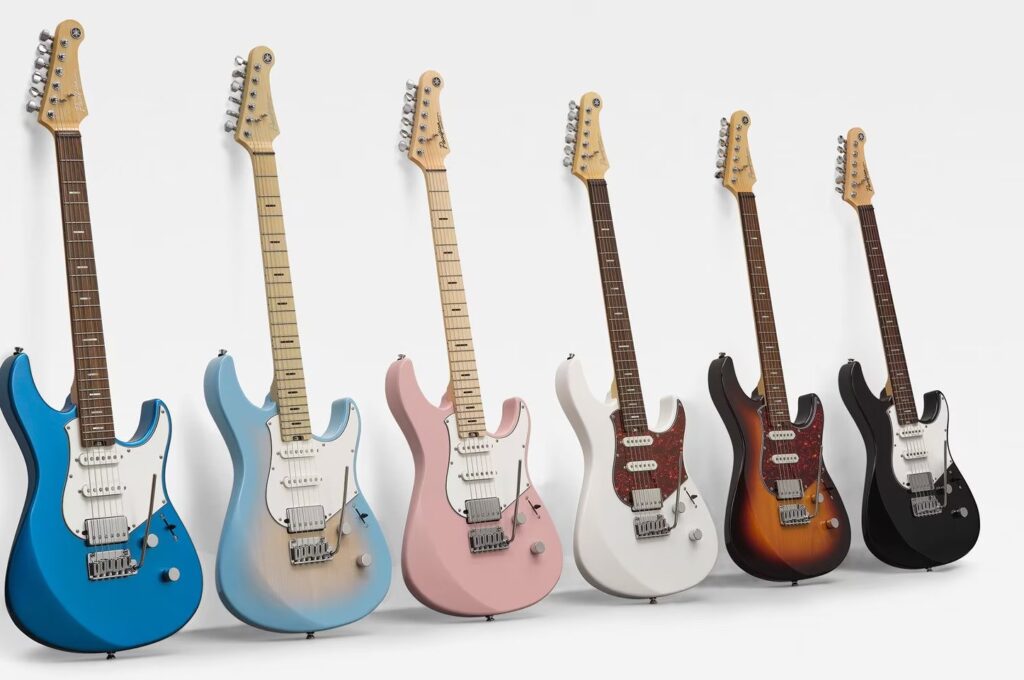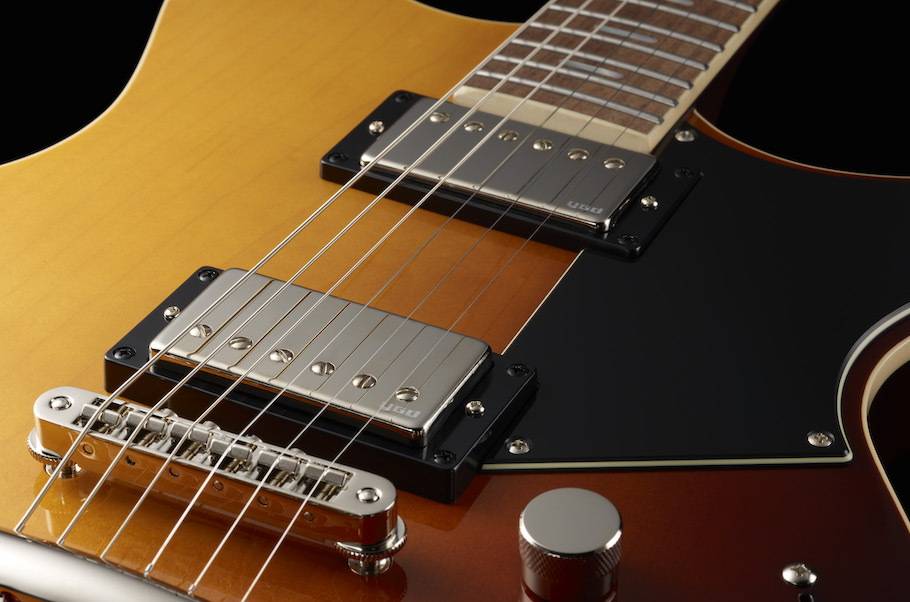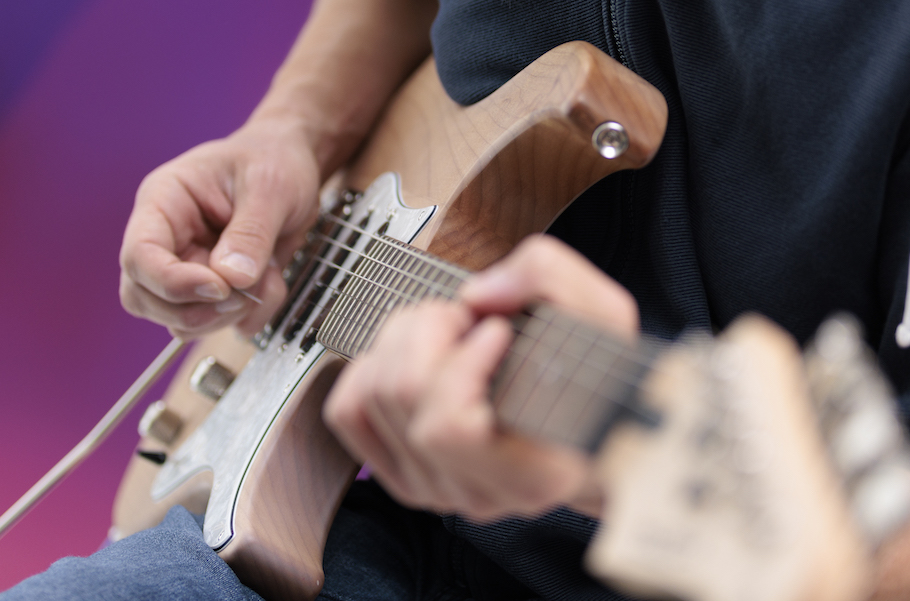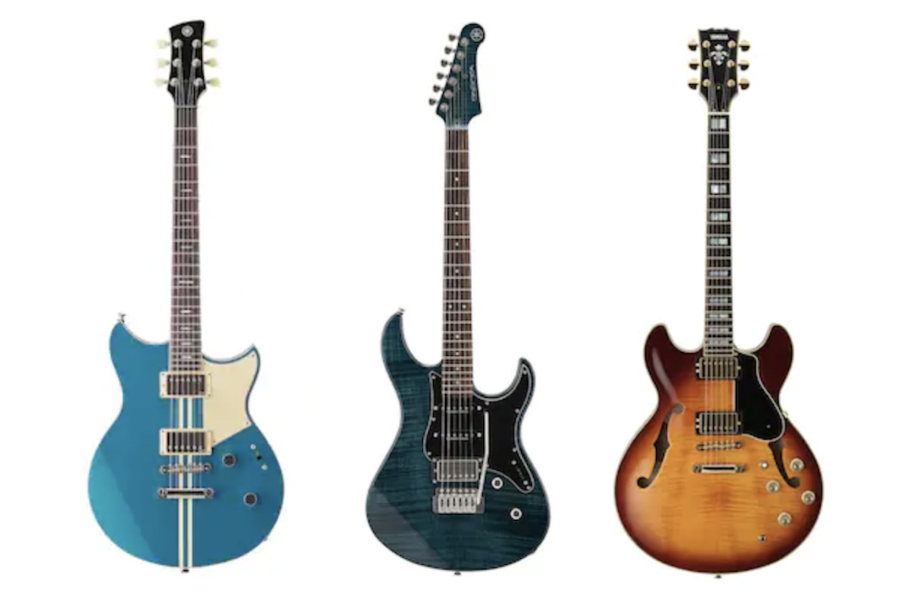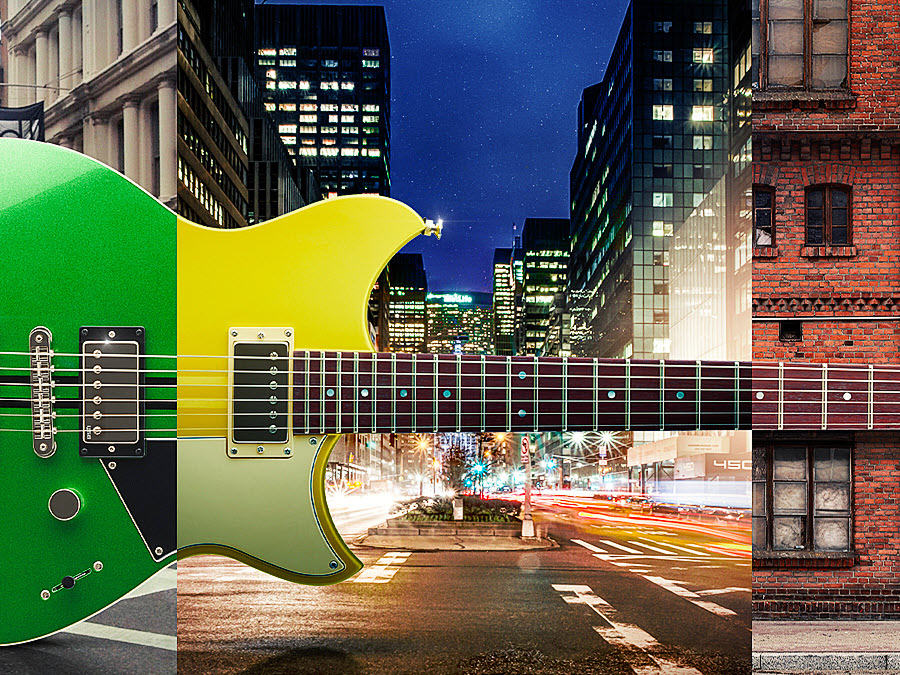Electric Guitar Tonality
What goes into great electric guitar tone?
The dictionary describes “tone” as the quality or character of sound. Of course, the quality of a sound is in the ear of the beholder.
Some of my friends revere certain guitar players, and often describe them as having great tone. Some I would agree with, some not. I’d argue that style, technique, chops and gear are separate attributes that contribute to the tone, but are not the foundation or source of the tonality itself. I’ve heard accomplished players make cheap electric guitars and amplifiers sound amazing, and players of lesser skill make expensive custom gear sound awful.
So where does great electric guitar tone come from? In this article, I’ll try to answer that question, looking at all aspects, from the physical to the metaphysical.
It Starts With Soul
It may sound clichéd, but I believe that first and foremost, great electric guitar tone comes from the soul of the player.
If this strikes you as vague, consider this: An extremely attuned and sensitive musician will respond in real time to the sounds they are coaxing from their instrument, making constant (and sometimes minute) adjustments in note choices, finger pressure, dynamics and phrasing until they achieve the tones they hear in their head (and feel in their soul).
When I’m presented with a new guitar, amp or pedals, I first listen to the sounds they produce and honor what they give me. I then combine that information with my personal touch to create my sound. I think you’ll find most skilled musicians do the same thing.
Does that mean we don’t care about what gear we use? Absolutely not. The sonic chain may start with the spirit, but the physical tools we use can be considered a conduit for the resulting tones.
Before we take a closer look at those factors, though, let’s discuss how playing technique helps shape guitar tonality.
The Importance of Technique
One of the fundamentals of playing guitar is that the fretting hand chooses the pitches, while the picking/strumming hand delivers the rhythm. If the fretted notes are played cleanly and are in perfect coordination with the rhythms, a positive and solid connection is made between the two hands, and the result is good tone. If the hands are not in sync with one another, the connection will be poor, and the resulting sound will be inconsistent and weak.
In my experience, these kind of synchronicity problems are usually due to strong downstrokes from the picking hand, with upstrokes that are weaker by comparison. These issues can be remedied by practicing scales purely with upstrokes until the dynamic, speed and attack are equal in both picking directions. Pay attention to how close the pick is to the strings; reducing distance in this area will improve tone, articulation and speed.
Don’t ignore the chords either. Practice clean chord changes slowly, with minimal space in-between each change, and gradually bring those transitions up in tempo.
It’s also important to have a handle on appropriate tones for specific styles of music.
If you play in a band (as opposed to playing solo), your main job is to create tones that support the feel, audio aesthetic and textures within that ensemble — challenges that will be crucial to keeping the gig. For example, the kind of overdriven tones you’d use for rock, blues and metal aren’t appropriate for jazz and funk music … in which case, you need to keep those tones warm and fat, clean and funky!
Now let’s move on to the physical aspects, starting with …
The Guitar Itself
Every guitar — both electric and acoustic — has its own intrinsic tonality. Plug a Yamaha Revstar into an amp and I guarantee you it will not only sound significantly different from electric guitars made by other manufacturers, but it will also be distinct from a Yamaha Pacifica or a Yamaha SA2200 semi-hollow electric plugged into that same amp. In fact, it will sound somewhat different from other Revstar models, and even (to a lesser extent) other guitars of the same exact make and model.
What’s the reason for this? A lot has to do with the physical construction of the instrument and the tonewoods utilized. Professional and Standard second-generation Yamaha Revstar electric guitar models, for example, employ mahogany for the body and neck, combined with a maple top and a rosewood fingerboard — a tried and true combination that harkens back to the ’40s and ’50s and the pioneering instruments made during the infancy of electric guitar.
Then there’s the issue of body type: hollow-body vs. solid-body, each of which imparts a distinctive tonality. Some newer designs, like that of second-generation Yamaha Revstar guitars, employ chambered bodies, which essentially combine the best of both worlds.
Neck design and how it is joined to the body is also a major contributor to electric guitar tonality. Does a guitar with a one-piece neck-through design and a truss-rod stripe sound different than one with a bolt-on maple neck and ebony fingerboard? Highly likely, as the wood, width and stiffness of the neck — even the width of the fret wires — all contribute to the transfer of tone.
Even the headstock plays a role. Anyone who has used a clip-on tuner will attest to the fact that resonance travels all the way from the player through the guitar and ends up at the headstock to produce the vibrations that the tuner uses to measure the pitch of the strings.
Electronics
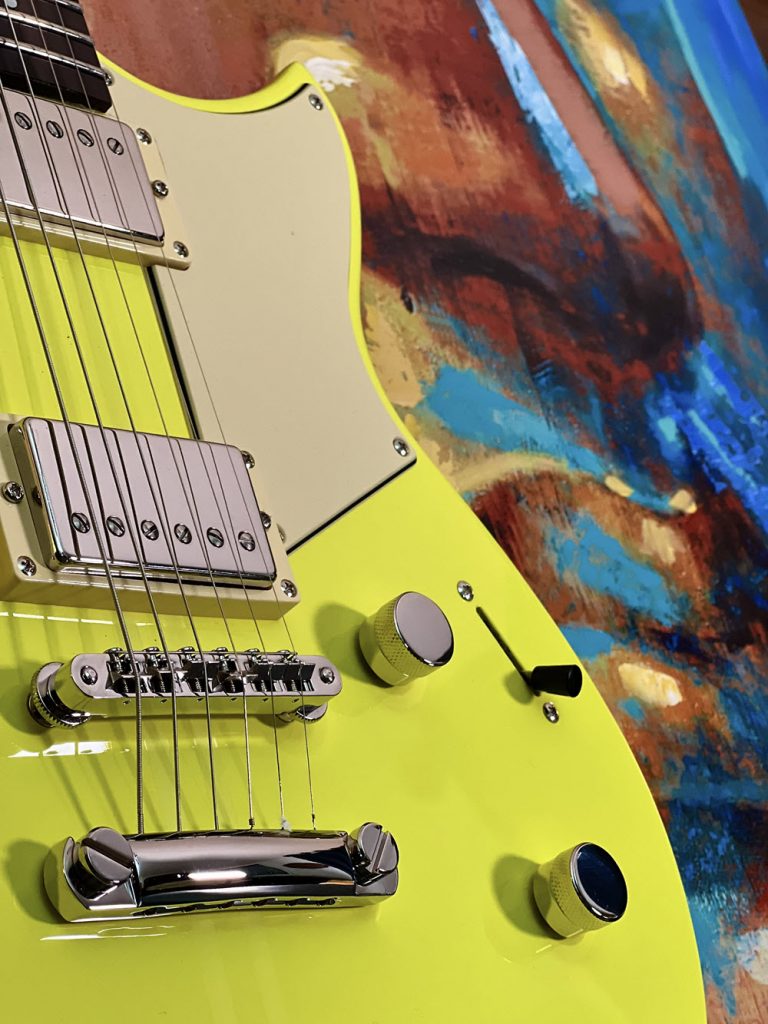
Needless to say, the electronic components of an electric guitar have a huge impact on the instrument’s sound. For example, single-coil pickups deliver a very different tonality than that of humbuckers or Filtertrons; that’s why many guitars offer combinations of various pickups. The magnets used in each, along with their windings, output levels and wiring configurations all have a profound effect on tone, as does the distance between the pickup and the strings, bridge and neck. Electric guitars with multiple pickups are outfitted with pickup selection switches; choose the pickup closest to the neck for a warmer tonality or the one closest to the bridge for a more “biting” tone, or opt for a blend of the two. (Some guitars, like Yamaha Revstar Professional and Standard models, offer comprehensive pickup selector switches that provide out-of-phase settings for even more tonal variety.)
Then there are the tone controls you’ll find on pretty much every electric guitar, as well as special features like the “focus” switch found on Revstar Professional and Standard models, which smoothes out the treble frequencies while boosting the lows and mids for a more defined sound. There’s also the dry switch (a bass filter) found on Revstar Element models, such as the RSE20 I’m playing in the video below.
Strings
Strings also make a considerable contribution to the tone. Lighter gauge strings generally lend themselves to articulations like bending, vibrato, tapping and legato-style playing, though at some sonic expense in terms of lack of “beefiness.” Heavier gauges work better for slide playing and add that extra bottom, but they are tougher on the fingers. In fact, you may need to compromise when it comes to strings. For example, when I’m performing live, I often need to play for extended periods of time, and that’s not physically possible for me on heavier-gauged strings; as a result, I have to find a balance between tone, gauge and a manageable string tension.
Picks
Yes, even your choice of pick (or your decision not to use one) affects electric guitar tonality. That’s because guitar picks are made from various materials (such as plastic, nylon or even metal) and come in different sizes and thicknesses.
Thin picks are great for strumming because they create a nice percussive sound, and work well in live performance. However, I often prefer medium picks (generally nylon) when I’m recording because they allow me to control the low frequencies and maintain clarity in the mids and upper-mid frequencies — something that’s extremely important when layering multiple guitar parts. I use extremely heavy picks for single-note lines because I like the solid connection the pick makes with each string. I can vary that dynamic using my inner sensibilities, coordination and tactility.
I’m also an advocate of using your nails for finger-styles, percussive rhythm playing, slide and double-stop parts. Acrylic nails impart their own unique tone, and allow you to articulate the notes the way you want for each individual technique.
Amplification
Electric guitars are rarely if ever played direct (i.e., plugged in but without amplification), so the amplifier being used will play a major role in tonality. It can be helpful to consider the musician and guitar as a painter and a brush, and the amplifier as the blank canvas on which the paint will be laid, layered and blended.
Most of the electric guitar tone will have already been created before the signal coming out of the jack reaches the amplifier and speaker. A quality amplifier and speaker combination like a Line 6 Catalyst® guitar amp will stay true to the delivery of the original tone. The amplifier’s tone controls (bass, mid, treble, presence) can then serve to accentuate (boost) or attenuate (decrease) different aspects of the sound for additional sonic shaping. A lesser-quality amp will alter the signal being delivered, usually deteriorating it to some degree. But even the best amp can’t do much with a poorly developed signal, in which case the result will almost inevitably be a substandard guitar tonality. The lesson is simple: Get your tone right before it reaches the amplifier.

Effects
Just as electric guitars are rarely if ever played unamplified, so too are they rarely played without effects such as reverb, delay, phasing, flanging, chorusing, distortion, etc. Your choice of effect type(s) can have a profound effect on the tonality of your electric guitar — in fact, even where you place them in the signal chain (i.e., reverb before chorusing vs. chorusing before reverb) can have an impact on your sound.
Logically speaking, by choosing to add an effect, you’re looking to alter the tone. (That’s why they’re called “effects”!) The mere fact that an effect has been added will have an impact on the sound of your electric guitar. Some effects devices offer a “true bypass” feature, which means they won’t affect the purity of the signal path when the effect is not engaged.
The Video
The video below presents a good example of what I consider to be excellent electric guitar tone. In it, I’m playing a second-generation Yamaha Revstar RSE20 Element electric guitar, running through a Line 6 Helix effects processor. I used the neck pickup exclusively, with the dry switch engaged throughout. As I was experimenting with the melody, I found that the combination of resonant tones in the key of C# minor coupled beautifully with the humbucking neck pickup and my custom Helix preset. You may even notice a hint of flute-like tones emanating from the double-stop phrases.
The Guitar
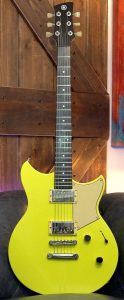
I really like how the Yamaha Revstar RSE20 faithfully reproduces my tone and adds that fat, warm sustain I look for in an electric guitar. It has a beautiful resonance thanks to its finely tuned chambered mahogany body, Alnico 5 humbucking pickups and neck-through body design. The RSE20’s tone control also features a “dry” switch that filters out some of the low-end frequencies for additional tone shaping.
The Wrap-Up
Without the musician, the guitars, effects and amplifiers all lay silent, absent of tone. So take time to evaluate your signal chain … starting with you.
When your soul and spirit connect with your physical being, they transmit and coordinate creative ideas through your fingers to the strings, tonewoods, pickups, amp and effects. When that happens, an electric guitar’s true tone makes its appearance as a unified sound and a unique form of musical expression. It’s not just magic, it’s sonic alchemy!










